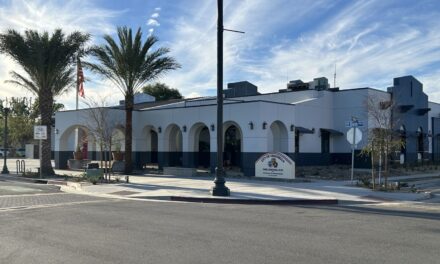Two California cities listed among worst cities for recreation
With July being National Parks and Recreation Month and maintaining a healthy weight through exercise saving people up to $1,500 in health care costs each year, the personal-finance website WalletHub today released its report on 2022’s Best & Worst Cities for Recreation.
To highlight the benefits of recreational activities for consumers and economies across the country, WalletHub compared the 100 largest U.S. cities across 47 key indicators of recreation-friendliness. For each city, WalletHub examined the accessibility of entertainment and recreational facilities, the quality of parks and the weather.
Best Cities for Recreation
1. Las Vegas, NV
2. Orlando, FL
3. Cincinnati, OH
4. Tampa, FL
5. Scottsdale, AZ
6. San Diego, CA
7. Albuquerque, NM
8. Atlanta, GA
9. Honolulu, HI
10. New Orleans, LA
Worst Cities for Recreation
91. Memphis, TN
92. Aurora, CO
93. Durham, NC
94. Garland, TX
95. Oakland, CA
96. Irving, TX
97. Newark, NJ
98. Jersey City, NJ
99. Chula Vista, CA
100. Fort Wayne, IN
Best vs. Worst
- San Francisco and Boston have the highest share of the population with walkable park access, 100 percent, which is 3.1 times higher than in Indianapolis, the city with the lowest at 32 percent.
- Las Vegas has the most playgrounds per square root of the population, 1.128457, which is 22.7 times more than in Hialeah, Florida, the city with the fewest at 0.049627.
- San Francisco has the highest spending on parks per capita, $442, which is 21 times higher than in Stockton, California, the city with the lowest at $21.
- San Francisco has the most bike rental facilities per square root of the population, 0.048113, which is 39.7 times more than in El Paso, Texas, the city with the fewest at 0.001213.
Expert Commentary
What are some cost-effective ways for local authorities to improve parks and recreation facilities?
“Local decision-makers and advocates can improve parks and recreation facilities in cost-effective ways using several approaches. Two approaches we see being very impactful are: Getting people involved – making sure decisions makers focus on what people need and the local priorities. By having a clear understanding of what experiences and outcomes people seek, community leaders can make informed and impactful investments. A second key is co-production – using a partnership approach both internally and externally. When community departments, agencies, and institutions partner together to identify shared goals, shared resources, and shared timelines they can shoulder costs together, be more efficient with resources, and share assets (land, operations, time, people, and expertise). Furthermore, by working together they can also usually reach broader audiences and more constituents.”
— Jamie Rae Walker – Associate Professor and Extension Specialist Urban and Municipal Parks, Texas A&M University
“The best cost-effective way for local authorities to improve parks and recreation facilities is to ASK the constituents, stakeholders, and community members (including youth) what needs improvement in parks and recreation facilities. Because they are the users of the facility, they would have the best insight. Once you ask, you listen and improve the things the community members say that need improving.”
— Katrina Black Reed, Ph.D. – Assistant Professor, Penn State Abington
What is the biggest mistake local authorities make in building and maintaining parks and recreation facilities?
“The biggest mistake that can be made by local authorities is being out-of-touch with their constituents and the communities that they serve. This often leads to unsustainable programs, a lack of long-term support and funding, and facilities that are misaligned with community needs, values and expectations.”
— Randall S. Rosenberger, Ph.D. – Associate Dean, Student Success and Special Projects, Oregon State University, College of Forestry
“We all tend to get excited about capital funds and grants. Thinking and developing long-term is an important aspect of community planning. Yet, leaders also need to ensure the entity has the operating budget to cover staff and equipment as well as the social and employee capacity to maintain any infrastructure or new programs added through long-term planning funding mechanisms. The key is to focus on building infrastructure and creating programs that the community has the budget, staff, expertise (or access to training), and capacity to maintain. By taking care of what we have and building and creating what we can afford, we can avoid deferred maintenance scenarios and not only create but maintain high-quality spaces, places, and programs.”
— Jamie Rae Walker – Associate Professor and Extension Specialist Urban and Municipal Parks, Texas A&M University
Should local authorities prioritize funding recreational activities for certain groups over others (e.g. elderly or children)?
“If we provide priority of funding for recreational activities then we would not have an inclusive recreational environment, which is what we, in the Recreation, Parks, and Tourism Management field, preach. Priority of services often comes from those who frequent and use the recreational services. I would not say to zone in on certain groups but offer programs to those who attend and use the recreational facilities.”
— Katrina Black Reed, Ph.D. – Assistant Professor, Penn State Abington
“This is a complicated question. Local leaders should use an equity lens and make sure everyone – who needs key outcomes – gets relevant and accessible services. A strong marketing plan is one key tool to identify and guide priorities, opportunities, feasible action, and key partnerships. The plan, as long as thinking equitably, should guide the selection of priority audiences and related outreach/investment. One difficult aspect of implementing plans in order of locally identified priorities is that ‘available funding’ can at times jump priorities. That is if increasing the number of walking trails is identified as a mid-level priority, but ample grants are available to support this effort, it might be addressed before other, higher priority needs.”
— Jamie Rae Walker – Associate Professor and Extension Specialist Urban and Municipal Parks, Texas A&M University
To view the full report and your city’s rank, please click here.
Image Sources
- Sailing in San Diego: Pexels



![Enrolling Now, Rewarding Careers Ahead [Sponsored]](https://ukenreport.com/wp-content/uploads/2024/04/COD_heroes_1-1385-2-440x264.jpg)



